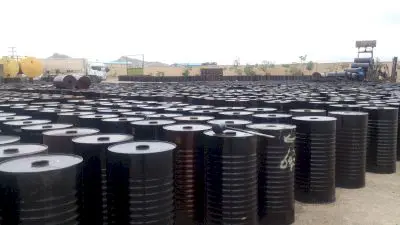Bitumen has been used as a waterproofing material since ancient times and in the time of Sumerians, Assyrians and even many previous civilizations, and it has been mostly used in building and insulating ships against water intrusion and sinking

The discovery of Bitumen dates back thousands of years. The use of naturally occurring bitumen can be traced back to ancient civilizations in Mesopotamia (modern-day Iraq) and the Indus Valley (modern-day Pakistan and India). These early civilizations observed the sticky, black substance seeping out of the ground and recognized its useful properties. Historically, bitumen was primarily used for waterproofing and sealing purposes. The ancient Mesopotamians used bitumen to seal boats, waterproof buildings, and construct water storage facilities. The Egyptians also utilized bitumen in mummification processes, as it helped preserve bodies.
The word "asphalt" has its roots in ancient Greek. The Greek word "asphaltos" referred to the natural asphalt-like material found in the Dead Sea region, which was used by the ancient Greeks for various purposes. The word eventually evolved to "asphalt" in English. As civilization advanced, the use of bitumen expanded. The ancient Romans made significant contributions to the development of asphalt technology. They used bitumen extensively in the construction of roads, aqueducts, and buildings. The Romans recognized the durability and weather resistance of asphalt, which allowed their roads to withstand heavy traffic and adverse weather conditions. These ancient Roman roads paved with asphalt became known as "via asfaltata" or "asphalted ways."
Bitumen has been used as a waterproofing material since ancient times and in the time of Sumerians, Assyrians and even many previous civilizations, and it has been mostly used in building and insulating ships against water intrusion and sinking. Also in ancient Egypt and Greece, bitumen was used to embalm corpses, as well as sculptures and decorations, and even in wars to defend the enemy at the gates of cities.
This valuable material has also been used in combination with baked bricks as mastic in the construction of temples and bridge pillars or as paving the streets and houses. Another application of this very valuable material has been its use as a moisture-proof material and a connecting agent in water storage devices.
Recorded use of bitumen dates back to about 3800 years ago, the time of the Sumerians. The role of bitumen in ancient Iran, which was known as (Mamaton) was also very basic. Khuzestan bitumen, which is known as "Mamaton" during the Achaemenid period, had many applications such as use in tool making, making utensils with bitumen, stamping and ornaments, etc., and also over time this material has religious, military, architectural and He found medicine and played an essential role in the growth and development of the Achaemenid civilization.
The Achaemenid dynasty used bitumen for sealing and waterproofing the palace with the grandeur of Persepolis. Remains of it can be seen in the historical complex of Persepolis. Ancient Susa artists used a mixture of bitumen and heated it to obtain a composition that was very similar to stone. They used this material to make various objects as well as to make sculptures and fossils.
During the Middle Ages, the use of asphalt declined in Europe, but it continued to be utilized in the Middle east and parts of Asia. The Persians (modern-day Iranians) used bitumen to construct buildings and water systems. The revival of asphalt as a Construction material occurred in the 19th century. In the early 1800s, Scottish engineer John Louden McAdam developed a road construction method that involved layering crushed Stone and compacting it with a binding agent made from bituminous materials. This method, known as "macadamization" or "tarmac," became widely adopted and marked a significant advancement in road construction.
In the late 19th and early 20th centuries, the modern asphalt industry began to take shape. The technological advancements in refining Crude oil allowed for the production of consistent and high-quality bitumen. The first modern asphalt plant was established in the United States in 1870, and asphalt pavements became increasingly common. Today, asphalt is a vital component of the global infrastructure. It is used in the construction of roads, highways, airport runways, parking lots, and various other applications where a durable and flexible surface is required. The development of polymer-modified bitumen and advanced asphalt technologies has further enhanced the performance and longevity of asphalt pavements.





